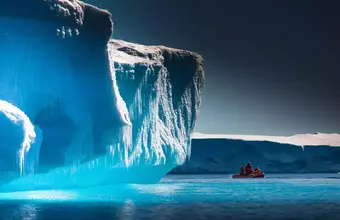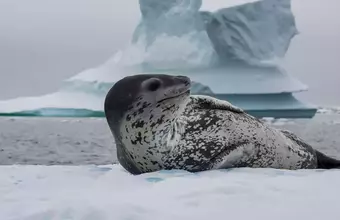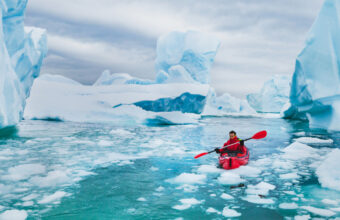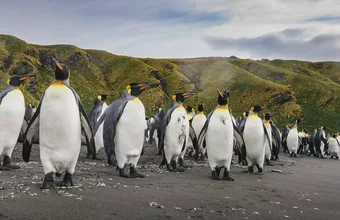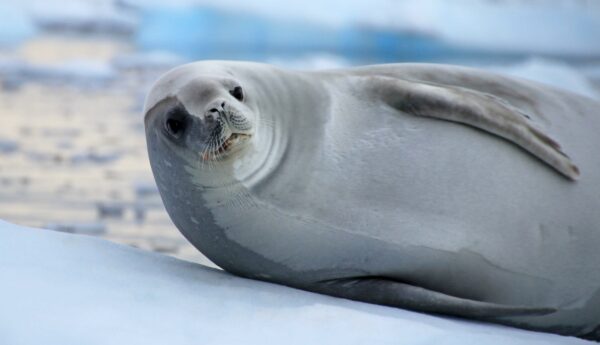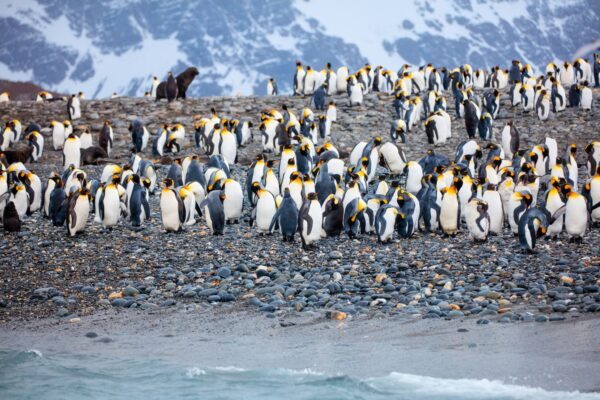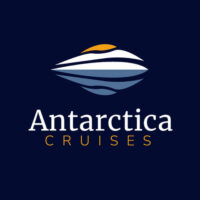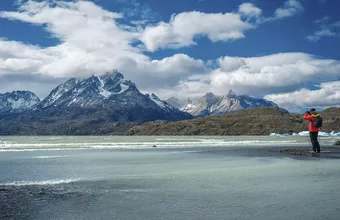Cruising to Antarctica
How to get to Antarctica: An expert guide
Visited by just a handful of people each year, cruising to Antarctica is to see the last great frontier on earth.
Travelling to the White Continent is a big decision to make: you must consider the not-so-insignificant cost, the vast distances, and the environmental impact of your visit.
And once you've made up your mind, with so many options to choose between figuring out exactly how to get to Antarctica can be something of a minefield.
To make things easier here's my guide to the best Antarctica cruises and how to plan your trip.
Cruising to Antarctica: Quick reference
- The most common way of getting to Antarctica is by cruise departing from Ushuaia in the far south of Argentina. These cruises land on the Antarctic Peninsula, and longer routes may call at other points in Patagonia, the South Atlantic, and the sub Antarctic islands.
- On the other side of the continent, Antarctica cruises departing from Australia and New Zealand cross the Ross Sea, taking at least a week. These cruises are usually longer and more expensive.
- "Expedition" ships with fewer than 500 passengers are permitted to make landings on Antarctica. (Cruise ships with more than 500 passengers are not allowed to land.) These are, in my opinion, by far the best Antartica cruises for the most thrilling experience and lighter environmental footprint.
- Antarctica cruises from South America cross the 500 mile Drake Passage, which is notorious for its rough seas. Some people choose to fly to the South Shetland Islands and join a ship there.
How to get to Antarctica
The main types of Antarctica cruises & tours
There are four main ways to get to Antarctica:
- Cruise on a smaller "expedition" style ship and make multiple landings for guided excursions. This is the most popular Antarctica cruise type, with more than 80% of visitors choosing to travel this way.
- Seaborne cruising without landings, in which you do all your sightseeing from the ship (boats carrying more than 500 passengers are not allowed to make landings).
- An air and cruise combination: You can fly to Antarctica or the South Shetland Islands and meet up with a ship to join a cruise.
- An air and land tour, which allows you to fly to the interior of the White Continent and explore on land. This does not include any shipboard cruising.
Nearly all visitors travelling to Antarctica arrive by sea from Chile or Argentina. A limited number depart from New Zealand or Australia. Some fly from South America to the northern Antarctic Peninsula where they meet a vessel for onward cruising. Only 1% of visitors each year fly to the interior of Antarctica from South America or South Africa.
Travelling by ship, making landings at various points on islands and on the continent, is popular because the journey becomes part of the adventure. There aren’t many downsides of travelling this way, unless you run into rough seas or are prone to seasickness.
How do you get to Antarctica from South America?
Travelling to Antarctica from South America allows you easy access to the Antarctic Peninsula, which offers excellent wildlife watching, plus dramatic mountains and rich history. Depending on the trip you choose, it’s also possible to visit the British overseas territories of the Falkland Islands and South Georgia, and possibly a research station or two.
Antarctica cruises starting from South America will need to cross the 497mile (800km) Drake Passage, an open stretch of sea where the Southern Ocean surges through a narrow gap between South America and the Antarctic Peninsula. This can cause rough seas for travellers, so the 2-3 day crossing — although the quickest route — can cause some travellers to worry. Stock up on seasickness tablets and take advice from your onboard doctor if you’re worried.
The most popular departure points for trips to the Antarctic from South America are from Ushuaia, Argentina, and Punta Arenas, Chile. If you depart from Ushuaia, you can visit the Antarctic Peninsula as well as sub-Antarctic islands such as South Georgia and the Falkland Islands (Malvinas) on your cruise.
From Punta Arenas in Chile, you can avoid crossing the Drake Passage by flying to the South Shetland Islands and sailing to Antarctica from there.
Almost 90% of tours for Antarctica that depart from South America leave from Ushuaia. Alongside Punta Arenas, other jumping-off points from South America include Tierra del Fuego in Argentina and Port Stanley in the Falkland Islands. Departing for Antarctica from South America is the best option for visitors from Europe, America and Africa.
How do you get to Antarctica from New Zealand or Australia?
Travellers can reach a different part of Antarctica by departing from New Zealand (Invercargill or Bluff) or Australia (Hobart). From these departure points, it takes a week to sail to Antarctica. Trips are broken up by visiting Macquarie, Snares, Auckland and the Campbell Islands, which are all rich in wildlife and nature — and very infrequently visited.
Because of the distances involved, Antarctica tours that depart from New Zealand or Australia last much longer (in the region of four weeks) and are generally more expensive. It’s also important to note that the eastern side of Antarctica offers a very different travel experience. Here, the icebergs are enormous (even by Antarctic standards), but there is much less wildlife than on the Antarctic Peninsula.
As there are fewer crossings to Antarctica from New Zealand and Australia, you’ll need to book your tour well in advance — most operators advise booking up to a year in advance. It’s also quite likely that you’ll return to a different port from the one you departed.
Once you reach Antarctica, you’ll spend your time around Commonwealth Bay or the Ross Sea region, with humpback whale-watching a particular highlight.
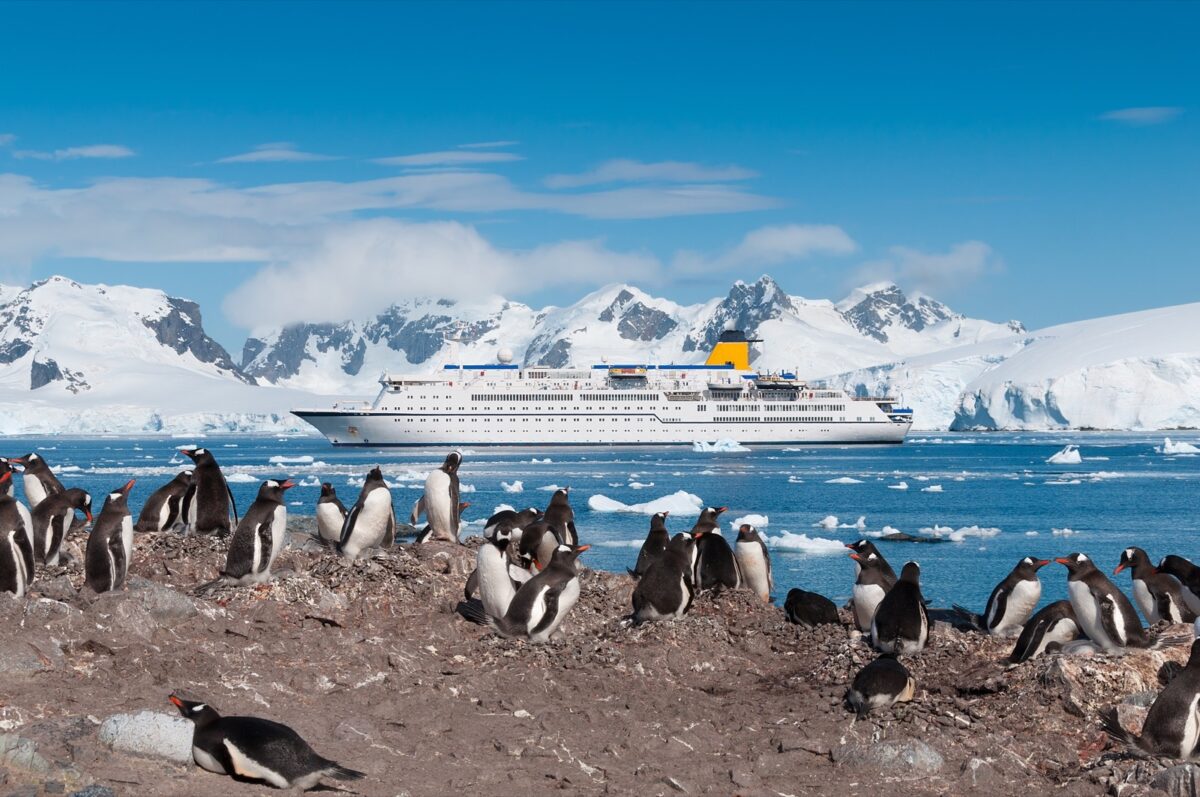
How to choose an Antarctic cruise
Find the best ship type for your trip
The types of Antarctica cruise ship varies enormously — in size, speed and in the type of accommodation on offer. It’s therefore important to take the time to explore the different options available and choose the right Antarctica cruise for you.
Vessels need to be functional and safe, but it’s reasonable to expect a certain level of comfort. Some ships are custom-made expedition vessels with all the modern conveniences, while others can be ex-Russian research vessels with more limited facilities — remember that most of your entertainment is going to come off the boat, unlike more traditional cruises.
The accommodation on board Antarctic cruises ranges from the very basic to the luxurious. Some ships have cabins which are more like dormitory rooms with shared facilities. At the other end of the spectrum are those offering fully-serviced suites, gyms and spas.
The ships vary in size too — you could opt to travel on a six-passenger yacht or a vessel carrying upwards of 500 intrepid travellers. It’s all about the Antarctica experience you want.
Types of Antarctica cruise ship
Boats visiting the Antarctic are grouped into four categories:
C1 — Traditional expedition ships that carry 13-200 passengers and can make landings.
C2 — Mid-size vessels that carry 201-500 passengers and can make landings.
CR — Vessels that carry more than 500 passengers and do not make landings (cruise only).
YA — Sailing or motor yachts that carry 12 or fewer passengers.
Speed is another factor to consider, and not simply because it helps you get to your destination more quickly. The faster the ship, the less time you’ll spend in the swell of the Drake Passage or Southern Ocean. If the ship can outrun the weather, not only will you spend more time onshore, you might well arrive there feeling less queasy.
Which style of Antarctica cruise ship to choose
The biggest consideration when choosing an Antarctica cruise ship is how often you want to dock on land. Current Antarctica boat regulations from the International Association of Antarctic Tour Operators (IAATO) state that only 100 passengers are permitted to disembark at any one time. With most vessels having two disembarkations per day, this means that if you’re on a boat carrying more than 200 people, there will be some days when you don’t leave the boat.
If you’re on a boat carrying more than 500 people, regulations mean that you won’t be allowed to dock at all — your entire trip will be from the confines of the boat.
For these — and environmental — reasons, it's often better to travel on smaller vessels of up to 100 people. These smaller Antarctic cruises will allow you to dock often and in smaller harbours. They also offer a more intimate experience, allowing you to get to know the boat crew and your fellow passengers. By contrast, larger ships may have better facilities and comfort.
Different boats will offer different onboard facilities. If your Antarctic boat is a former research vessel, you may have a large viewing deck where you can watch the icebergs and amazing scenery float by. Some will have well-stocked libraries on Antarctic expeditions, wildlife and history, while others might have saunas, gyms and steam rooms.
One important decision to make is the type of cabin you want. Smaller vessels are more likely to offer portholes or windows in all cabins, whereas larger cruises might have cheaper cabins that don’t offer views. You can save money by sharing a cabin or forgoing an ensuite bathroom. It all depends on the type of trip you want.
Finally, consider the season and route you want to travel. If you want to travel earlier in the season or cross the Antarctic Circle, you may need to choose an ice-breaking or ice-strengthened boat. If you don’t, you may find your trip delayed or re-routed depending on weather conditions. Be sure to talk through the pros and cons with your travel company before you book.
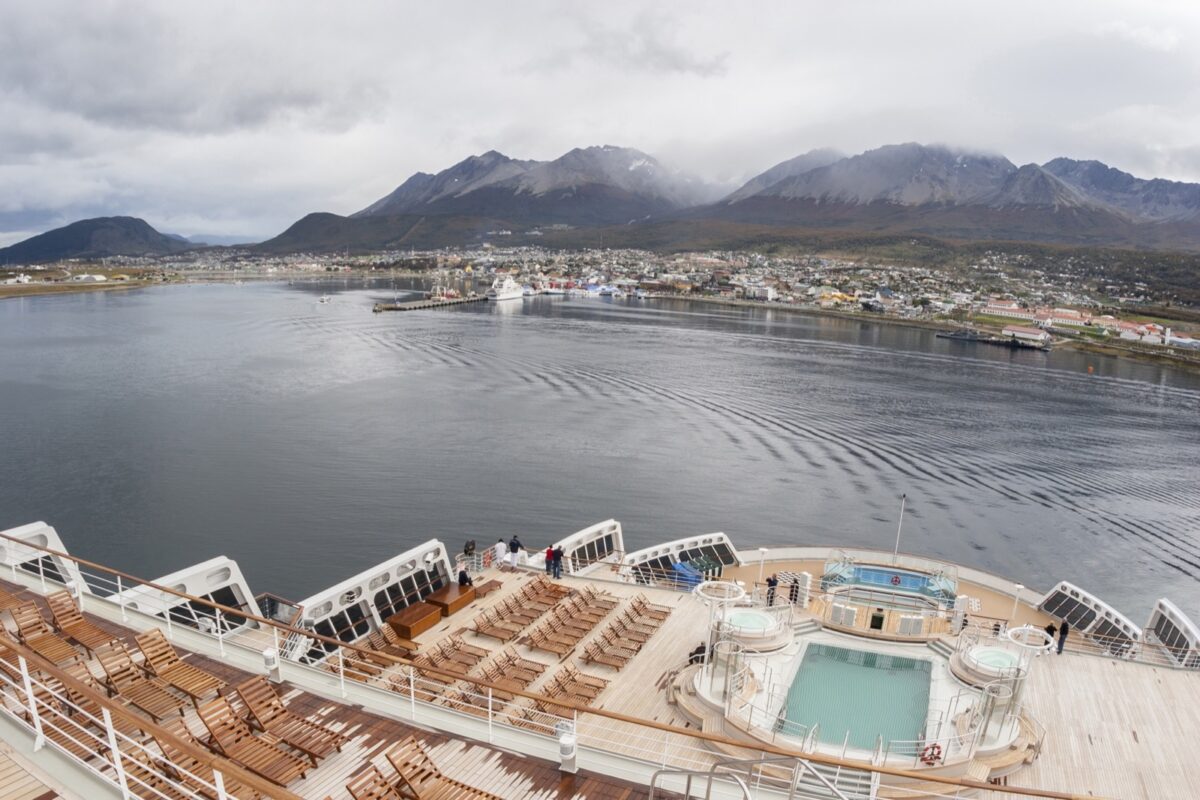
Life onboard an Antarctica cruise
What to expect
Your home away from home should have all the amenities that you’ll want and need for smooth sailing. Here’s what you can expect from life onboard a cruise to Antarctica.
Seasickness
The biggest concern many people travelling to Antarctica have is seasickness and how it will impact your trip. The truth is that it is quite common, especially when crossing some of the world’s roughest seas, where you can encounter swells of 12m and more. Every ship will have a doctor on board, who can administer seasickness medicine, but it makes sense to bring your own. If you know you’re prone to seasickness, try to get a cabin lower down in the ship — the higher your room, the more you’ll feel the rocking motion. Keep your cabin well-ventilated and make sure to get some fresh air. When on deck, focus on the horizon which can reduce dizziness and help you to get your sea legs.
Excursions and landings
Most Antarctic cruises will have two landings a day — one in the morning and one in the afternoon. After breakfast, you’ll be called to board a Zodiac boat to start your adventure. It’s important to layer clothing appropriately — the winds whipped up by your boat coupled with sleet and freezing temperatures can be intense. After your excursion, you’ll normally return to the ship for lunch, sail on to a new landing point, and then head out again in the afternoon.
Zodiacs are used for two purposes — to ferry you to Antarctic soil for landings and for cruise adventures that let you get closer to icebergs and wildlife like whales, seals and penguins. On bigger tours, you may find your group split into two, with one group landing and another cruising, before swapping over after a couple of hours.
All excursions are subject to the weather. Your expedition leaders will do everything they can to make sure you experience as much as possible, but the ultimate priority is everyone’s safety. If a landing/cruise is not possible due to ice, bad weather or rough seas, they’ll try to add in another excursion elsewhere. Be prepared for itineraries to change.
Lectures
Your cruise ships might have a lecture programme in which experts will give you the background knowledge you need to prepare you for what you will see when you go onshore. Normally held on sea days, evenings and after landings, the talks cover anything from birdlife and geology to climate change and Antarctic history.

Antarctica passenger regulations
For nearly 60 years, official guidelines have controlled exactly what individuals and countries can do in Antarctica, in order to protect and conserve that remarkable place.
The guidelines, part of the Antarctic Treaty, provide general advice for travelling to any part of the continent. The aim obviously, is to ensure that visitors do not harm the environment. There are also guidelines specifically for some parts of the continent that you might visit, but your guide will explain those to you before you get on shore. Minimize your impact on Antarctica by familiarizing yourself with, and abiding by, all the guidelines. And pay close attention to your guides and follow their instructions.
Protect wildlife
It should go without saying, but the old mantra of “take only pictures and leave only footprints” is doubly important in Antarctica. The vegetation that you’ll encounter, including mosses and lichens, is fragile and very slow growing. Do not damage vegetation by walking on moss beds or lichen-covered rocks. You’ll be doing most of your travel on foot, so be sure to stay on established tracks whenever possible. If there isn’t a track, take the most direct route and avoid vegetation, fragile terrain, scree slopes and wildlife.
Treat all wildlife with respect. Move slowly and quietly so as not to disturb them and always give them the right of way. Be sure not to block their access to the sea. Think about it this way: You’re visiting their home and just as you would do in any new situation, follow their lead. Don’t get too close - keep at least five meters away - and watch out for their reaction to your presence.
Perhaps one of the most harmful things to the Antarctic environment is the introduction of non-native species. To make sure you don’t bring in any plant or animal life or even potentially a disease, carefully clean your boots and all your equipment, including clothes, bags, tripods, tents and walking sticks, before bringing them to Antarctica. Pay particular attention to boot treads, velcro fastenings and pockets which could contain soil or seeds. Your guides may vacuum out pockets or cuffs in your pants before you disembark.
The transfer of species and disease between locations in Antarctica is also a concern, so be sure that all clothing and equipment is cleaned before moving between sites. Your ship will have cleaning stations for your boots before you leave, and for your return.
Respect protected areas
There are many historic sites on Antarctica and they should be respected. Do not interfere with, deface or vandalize any historic site, monument, artifact, or other building or emergency refuge. You might spot something of historic value that the authorities are not even aware of. Do not disturb it. Instead, tell your expedition leader or the national authorities.
Before entering any historic structure, clean your boots of snow and grit and remove snow and water from clothes as these can cause damage, and watch your step. There may be artifacts that are obscured by snow when you’re exploring historic sites.
Keep Antarctica pristine
Most of these regulations and guidelines should be fairly obvious. Your expedition leaders will ensure that you are familiar with them and that you how to behave before you disembark. However, it can all be boiled down to this: Antarctica is relatively pristine. It is the largest wilderness area on earth and we’d all like to keep it as nice as we found it. Remember the golden rule: Leave no trace of your visit.
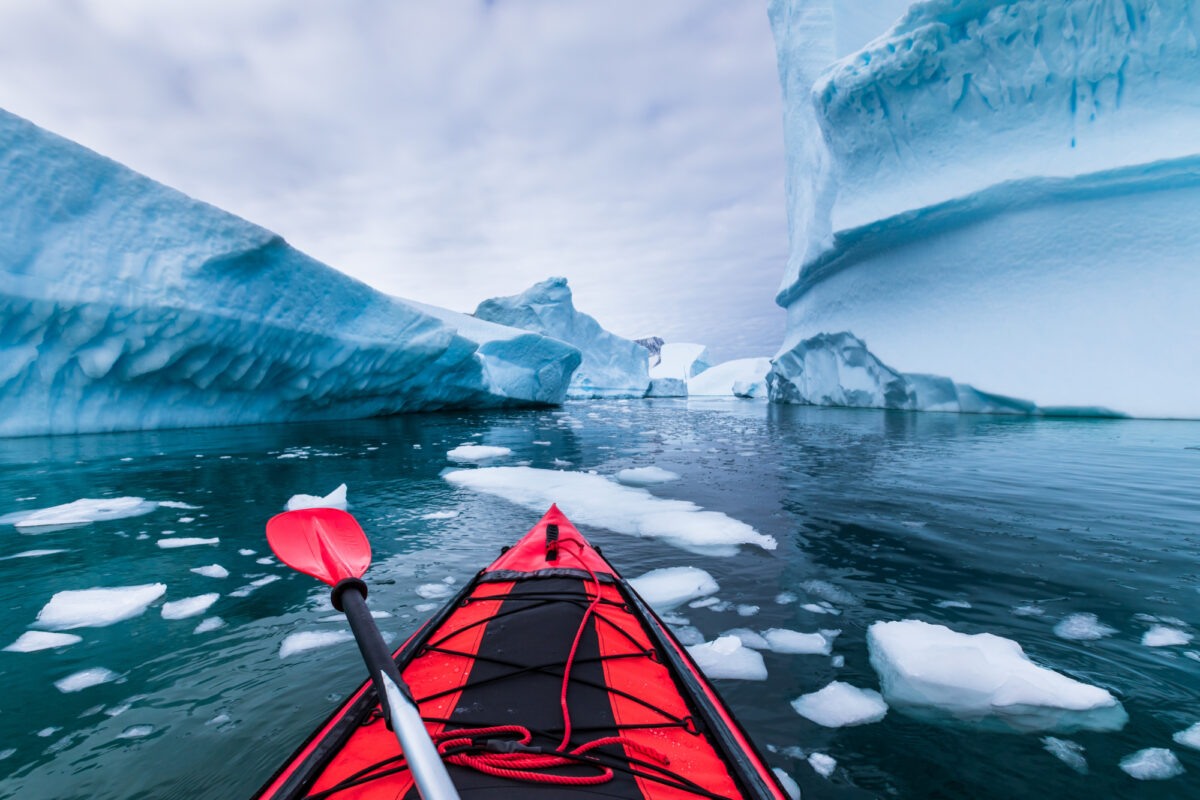
Antarctica cruise FAQs
Your questions, our expert's answers
Question
What is there to do while on the ship?
Answer
Some Antarctic cruise ships have such luxuries as gym, sauna and small pools, but they are rare. Most ships have a lecture theatre, library, bar and restaurant, and of course the main deck. All offer lectures focusing on the geology, history and wildlife of Antarctica and the Southern Ocean to help you prepare for what lies ahead. You can meet the crew and expedition team and your fellow passengers in the ship’s common areas. Be sure to bundle up and spend some time on deck, taking in the spectacular scenery and scanning the horizon for whales, seals and seabirds. You can also do this from the comfort of the lounges and observation decks.
Question
Can we go on shore?
Answer
Shore landings are a feature of Antarctic cruises and one or two excursions are usually planned per day, weather permitting. You usually get to land in a Zodiac, a sturdy, inflatable, open-air boat that can travel quickly in shallow water.
Note only ships carrying up to 500 passengers are permitted to land on Antarctica.
Question
What should I pack for an Antarctica cruise?
Answer
Though it can be cold, most Antarctica cruises take place during the southern summer, and temperatures will vary. On a sunny day, it could get up to 2C (that’s 35F). If it’s overcast, you are almost assured of below-freezing temperatures. So packing layers is a smart choice.
A merino base layer is best, with a fleece or midweight base layer. On your legs you can wear ski or snowboard trousers and your cruise ship might provide a bright outer layer such as a parka that is easy to see in the snow. If yours doesn't, bring a warm, water-resistant coat or ski jacket; a hood is useful to block the wind.
Other essentials:
- Knee-high, waterproof boots. Most tour companies will assign you a pair before the first land excursion and you’ll keep them for the whole journey. They are easy to wash before and after you go on shore to keep the continent pristine. Wear with a thick pair of wool socks (pack a few extra pairs).
- Waterproof gloves or mittens. Take a spare pair.
- Scarf or neck gaiter helps when the wind starts to blow, and a warm hat that covers your ears.
- Glacier glasses are top-notch, but goggles or high-quality sunglasses will work, too. A polarised pair can help you spot whales or penguins popping out of the water.
- High SPF sunscreen is a must. Not only are you dealing with the aforementioned glare, but the ozone layer is also thinnest here. Apply before every excursion.
- Everyday clothes for days at sea when you move between the ship’s deck and the inside, layers are good for quickly warming up or stripping off. Shoes with good grip are a must as the decks can get slippery.
- You may want a nice outfit as there is usually a captain’s dinner on the last evening, and anything that doesn’t look like what you’ve been wearing for the past week will be an improvement. However, if you have limited space, no-one is going to judge you.
- Bathing suit if you're brave enough for a polar plunge!
- Camera (obviously!)
- A good pair of binoculars.
- Waterproof bag to keep your small electronics dry.
- Chargers: there are outlets on the ship for charging your small electronics.
- Small backpack or daypack for your on-shore excursions.
- Books, playing cards, games for down time.
- Seasickness medication.

